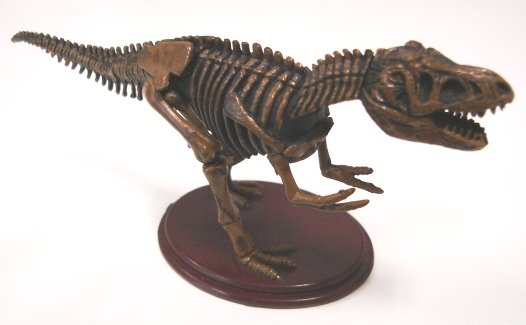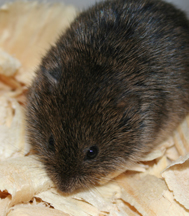 This is the first article of a two-part Fresh Brainz creature-feature where I will introduce some really interesting animals to you. But before I delve into the discussion, let me clear up one misunderstanding that people often have about molecular biologists.
This is the first article of a two-part Fresh Brainz creature-feature where I will introduce some really interesting animals to you. But before I delve into the discussion, let me clear up one misunderstanding that people often have about molecular biologists.1. Sometimes molecular biologists get asked about animals they study, and let's say one of them says "zebrafish". Her non-scientist friends might then say: "Oh, you like to study fish? What's so special about fish?" They might even refer to her as a "fish expert" and start bombarding her with trivia questions about fish.
Ok I won't deny that there are people who study fish just for sake of studying fish, like marine biologists or zoologists. But most molecular biologists are not interested in studying all aspects of one species of animal, like how fast the zebrafish swims, or what its predators is, or where its natural habitat is.
They are using that animal species as a model. There is something unique about this particular species that makes it suitable for studying something important to researchers. More often than not they want to investigate the features of the animal that are similar to features of human beings.
Of course your choice of model organism depends on what you what to know.
To learn about basic cellular processes, such as how proteins are made using the DNA code in a cell, bacteria are very useful.
Studying the control of gene expression is better done using yeast cells.
Understanding cell cycle progression (relevant to human cancers) can be done in frog eggs which are large and full of protein.
To find out more about birth defects involving the neural tube, researchers often use zebrafish. Of course, to learn about limb development defects you will need a model animal with limbs, like mice.
Each model organism has its advantages and disadvantages, for both scientific and practical reasons.
For example, the worm Caenorhabditis elegans is useful for genetic studies because it shares many genes with people. It is tiny, cheap to maintain, reproduces quickly, can be grown in a simple petri dish and you can study lots of them at the same time.
However, it is evolutionarily distant from people, and results obtained from worms may not be relevant to human beings.
Mice on the other hand, have 99% genes in common with human beings (95% sequence identity at the DNA level), so knowledge gained from mouse studies are far more relevant to people. In fact mice are very often used in medical research. However there are also drawbacks to using them.
Mice are larger, are more expensive, need more effort to care for them, have a much longer generation time and must be housed in a special facility.
Thus, one must choose a model organism based on its unique biology and other practical considerations.
2. Now let's talk about the unique star of this story: the Vole!
 I think science is cool because we can discover that some boring, normal-normal looking things are really very strange. The vole is one of them.
I think science is cool because we can discover that some boring, normal-normal looking things are really very strange. The vole is one of them.Voles are small rodents that resemble mice. Like mice, they seem to be evolving at a faster rate than other vertebrates, but voles have taken this to an extreme. For one vole genus Microtus, 60 species have evolved in just 0.5 - 2 million years.
To put this in perspective, that is about 60 times the average speciation rate of other vertebrates!
In addition, they have a whole bunch of weird characteristics such as:
a) Within the genus Microtus, the number of chromosomes vary wildly from 17-64. Species within a genus usually have the same chromosome number.
b) In one species, there is a super-big X chromosome that contains about 20 percent of the entire genome. Much bigger compared to other vertebrates.
c) In another species, females possess large portions of the Y chromosome, which is usually only present in males.
d) In yet another species, males and females have different chromosome numbers, which is uncommon in animals.
And here's a final bizarre twist - despite these crazy genetic variations, all voles look alike! Yet there is no evidence of accidental matings between different species of voles. We can't tell them apart, but they know exactly what makes them distinct.
Far out, man.
You can read more about these amazing critters from this website. DeWoody Lab at Purdue University is studying voles in order to improve gene therapy techniques, ultimately for human medical applications.
Of course for a molecular evolutionary biologist like me, these animals are already a marvel by themselves. It would be fascinating to examine in detail how these animals are such speciation-machines (I suspect a unique modular organization of developmental hub genes), but luckily for you, this is not that sort of blog!
Whew... that was heavy stuff.
The next post will be fluff. I promise!






3 Comments:
Wow! I thought voles were just on Star Trek.
DS9 isn't really Star Trek :D
why not:)
Post a Comment